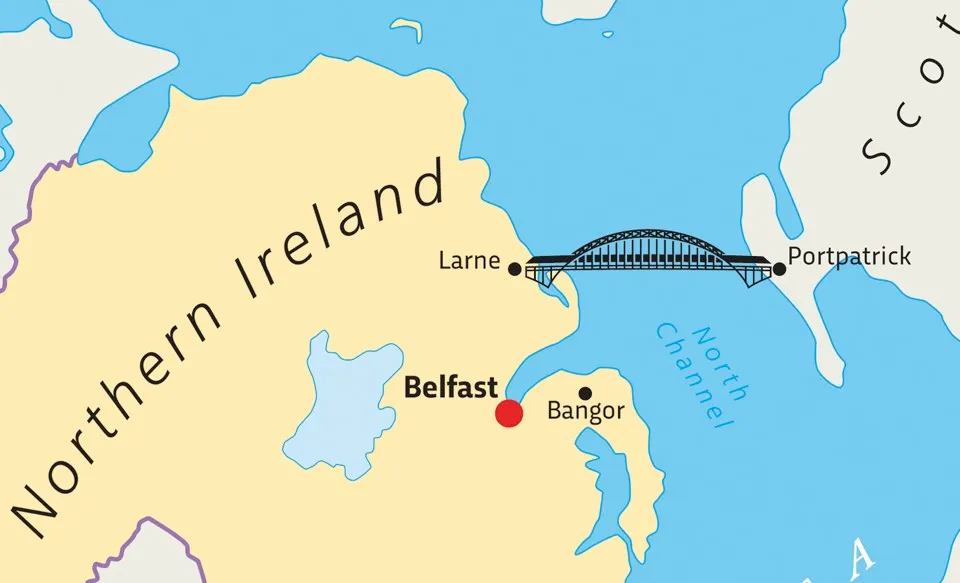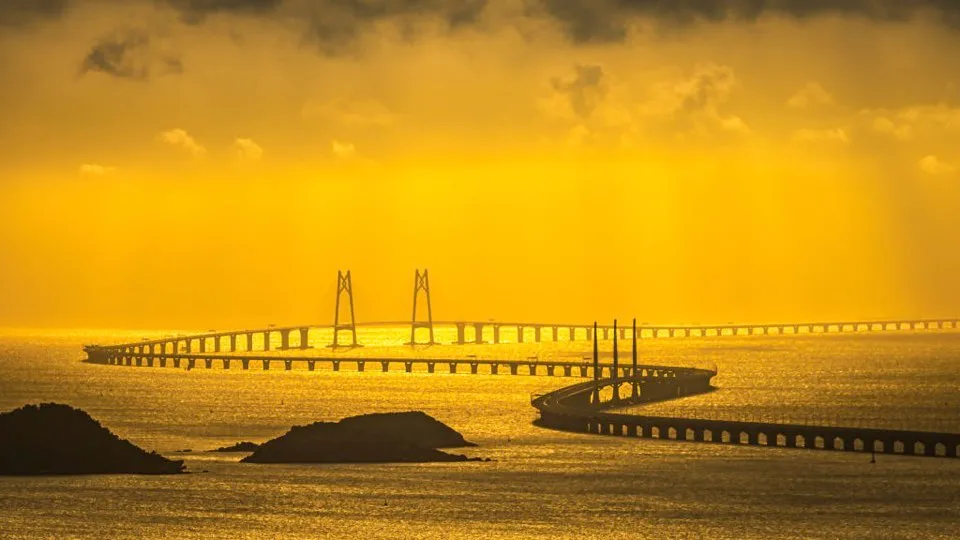The prime minister’s official spokesperson raised a few eyebrows recently when they declared that a “proper piece of work” was being carried looking into the possibility of linking Scotland to Northern Ireland via a bridge spanning the Irish Sea.
At the moment the leading candidate for the locations of the route are Portpatrick on the Scottish coast and Larne on the Northern Irish coast - a span of around 40km.

The largest structures built over open sea are currently the Hangzhou Bay Bridge on the Eastern coast of China, which spans 36km of the Qiantang River delta, and the Hong Kong–Zhuhai–Macau Bridge, of which roughly 30km crosses the Pearl River delta.
Length aside, there are also a number of other significant challenges that such a project would raise thanks to depth of the sea, which at times reaches 300m, and the large spans that would be required to let any ships travelling on the water pass under the bridge safely, says Ian Firth, the chairman of the British Group of the International Association for Bridge and Structural Engineering.
“Another solution might be to use floating foundations; the Norwegians are doing this already,” says Firth. “You have a floating pontoon held below the surface of the water, it’s trying to float but it’s tethered down to the seabed.
“You still have to get down there and drill holes in the rock down below, but you’re now just tying it down with some cables.
“Then the buoyant platform is held below the waves so that the buoyancy forces don’t vary significantly; you don’t want them at the surface because then you’re getting wave action and tidal action.
“You then stand your bridge structures on those buoyant platforms. That’s the sort of thing that potentially could be doable.”
Read more about incredible engineering:
- Monster movers: 6 massive machines for shifting rockets, turbines and even ancient buildings
- Biomimetic design: 10 examples of nature inspiring technology
- 10 geeky places to visit around the UK
Even so, such a structure would still leave those travelling across it at the mercy of high winds and heavy rain as they crossed even taking into account any currently existing weather shielding measures that could be fitted. However, there may be another solution.
“There’s another type of floating structure, a submerged, floating tunnel. You basically have a tube which is like a tunnel to drive through, but it’s not bored through the rock but sits under the water - a floating tube which is itself tethered down,” says Firth.
“You tether it down, shall we say twenty metres below the water, so that ships can go happily across the top of it, but the thing is actually floating. If you’re in your car, you’re driving, in effect, through a tunnel. That is a very interesting, and I think really quite potentially plausible solution.”

But it is still early days and there are lots of factors to consider, such as the ability of the transport links either side of the crossing to cope with any additional traffic and even the fact that it may simply be more efficient to upgrade the existing ferry infrastructure, before any kind of design work could begin.
“At the moment it is an idea and not much more than that. To begin with we’d need a pre-feasibility study which looks at what the options are so that we can actually frame the scope of a feasibility study,” says Firth.
“After that people like me could actually go away and agonise over what the options are. I believe it’s possible. But ‘possible’ and ‘affordable’ are two different things. Obviously, I’m not trying to put numbers to it, but it is, you know, eye-wateringly expensive, and nothing like it has been attempted before.
“But, you know, we’re in the business of finding solutions to challenges; that’s what we do. Us civil structural engineers are good at that kind of thing.”
